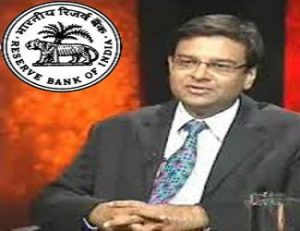The Reserve Bank of India announced its sixth bimonthly monetary policy review for 2016-17, on February 8, 2017 and has maintained its status quo with key policy rate unchanged.
- On the basis of an assessment of the current and evolving macroeconomic situation in the country, the Monetary Policy Committee (MPC) decided to keep the key rates unchanged.
- The RBI Monetary Policy Committee (MPC) voted 6-0 in favor of the key rates, which is the third unanimous decision in a row since it was first set up in September 2016.
- The next meeting of the MPC under the chairmanship of RBI governor Urjit Patel is scheduled on April 5 and 6, 2017.

- Other members of MPC includes, R Gandhi, Deputy Governor RBI,. Michael Patra, Executive Director of RBI, Chetan Ghate, Professor, Indian Statistical Institute (ISI), Professor Pami Dua, Director, Delhi School of Economics (DSE), Ravindra H. Dholakia, Professor Indian Institute of Management (IIM), Ahmedabad.
- The Committee said that the environment for timely transmission of policy rates to banks lending rates will be considerably improved if:
- The banking sector’s Non-Performing Assets (NPAs) are resolved more quickly and efficiently.
- Recapitalisation of the banking sector is accelerated.The formula for adjustments in the interest rates on small savings schemes to changes in yields on government securities is fully implemented.
Key Policy Rates
- Repo Rate under the liquidity adjustment facility (LAF):6.25 percent (Unchanged)
- Reverse Repo Rate under the LAF: 5.75 percent (Unchanged)
- Marginal Standing Facility (MSF): 6.75 percent (Unchanged)
- Bank Rate: 6.75 percent (Unchanged)
- Cash Reserve Ratio (CRR): 4 percent (Unchanged)
- Statutory Liquidity Ratio (SLR): 20.50 percent (Unchanged)
Definition of Key Rates
Repo Rate
It is the rate at which RBI lends money to commercial banks.
Reverse Repo rate
It is the rate at which RBI borrows money from commercial banks.
Cash Reserve Ratio (CRR)
The share of net demand and time liabilities (deposits) that banks must maintain as cash balance with the Reserve Bank
Statutory Liquidity Ratio (SLR)
The share of net demand and time liabilities (deposits) that banks must maintain in safe and liquid assets, such as, government securities, cash and gold.
Bank Rate
Bank Rate refers to the official interest rate at which RBI will provide loans to the banking system which includes commercial / cooperative banks, development banks etc for a long term.
Marginal Standing Facility Rate (MSF)
The rate at which the scheduled banks can borrow funds from the RBI overnight, against the approved government securities is termed as MSF.
RBI Key Projection
Inflation
RBI had projected the headline inflation at 5 percent in Q4 of 2016-17 in December.
- In sixth bimonthly monetary policy review, RBI has projected the inflation to be in the range of 4% to 4.5% in the first half of 2017-18 and in the range of 4% to 4.5% in the second half of 2017-18.
- The MPC aims to achieve consumer price index (CPI) inflation at 5 percent by Q4 of 2016-17.
GDP Growth
The RBI has projected GDP growth in the current fiscal at 6.9 percent. It expects the growth to recover sharply in 2017-18 and reach 7.4 percent.
GVA Growth
- RBI has projected the GVA growth for 2016-17 at 6.9 percent from the existing 7.1 percent.
- Growth is expected to recover sharply in 2017-18 and accordingly, GVA growth for 2017-18 is projected at 7.4 percent.
Current Account Deficit
RBI has proposed the current account deficit (CAD) to remain below 1 percent of GDP in 2016-17.
Cash withdrawal Limit
- RBI has announced that from March 13, 2017, there would be no limit on cash withdrawal.
- Besides, with effect from February 20, the withdrawal limit from savaing accounts will increase from Rs 24,000 a week to Rs 50,000 a week.
RBI to Set up Enforcement Department to Monitor Bank
The Reserve Bank of India on February 8, 2017 informed about its decision to set up a separate Enforcement Department to effectively monitor bank in case they violate regulations. The Enforcement Department will start operations from April 1, 2017.
- Presently, each department of RBI takes action against banks for violations of rules. With Enforcement Department, a centralized department would be set up to deal with the issue.
- Besides, RBI has also proposed to set up a separate committee on cyber security.
- The inter-disciplinary Standing Committee on Cyber Security will review the threats posed in the existing or emerging technology and also study the adoption of various security standards and protocols.
- It will also look at interface with stakeholders and suggest appropriate policy interventions to strengthen cyber security and resilience.
Reserve Bank of India
- The Reserve Bank of India is India’s central banking institution, which controls the monetary policy of the Indian rupee
- Headquarter: Mumbai Maharashtra
- Founded: April 1, 1935, Kolkata
- Governor: Urjit R Patel





